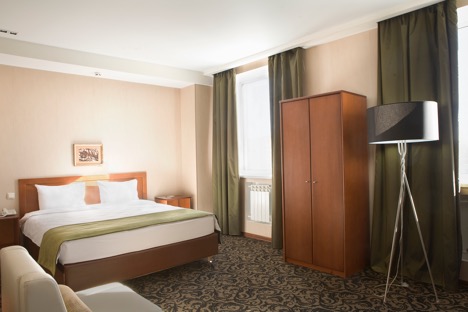
by Raymond Web
Managing a hotel is a huge task and comprises of numerous activities. There can be many instances where you may hit the panic button — one of them being a bedbug infestation. Whether you have bedbugs or not, you need to have a plan of action so that you are prepared when the bedbugs do strike. In this article we will address how to find bedbugs and what to do to exterminate them.
Steps to Inspect for Bedbugs in the Hotel
- Inspect the Complete Room
- Bed and Mattress
Don’t just flip the mattress to look for bedbugs. They tend to hide in the joints of the bed frame and along the slats. Inspect them with a flashlight and look into the crevices of the headboard, mattress seams, intricate designs on the headboard and inside the slip cover. Inspect the pillow, within the pillow case and the zipper.
- Closets, Wardrobes and Floorboards
If you think that bed bugs just hide in soft and comfortable places, you could not be more wrong. Bedbugs can hide inside the closet, floor boards and the floor molding meeting the wall. Take a close look at the drawers in the wardrobes and the corners. Check the furniture as well — tables, chairs and stools.
- Decor Items
Check the luggage stands and look at the drawer seals and corners of the nightstand. Check inside the lampshades and the area where the lamp makes contact with the nightstand. Don’t forget the picture frames, bedside decor and alarm clocks.
- Investigate Stains
When a bedbug eats, it will have to defecate. This excrement can be found as dark stains on the mattress and surrounding areas. Train the housekeeping staff on how to check for bedbugs by inspecting for suspicious looking stains. Keep an eye on bedbug eggs as well and any other hint that might indicate an invasion of bedbugs.
- Take Complaints Seriously
If guests have complained about insect bites either in person or through an online review, take those complaints seriously. Though the insect bite may not necessarily point towards bedbugs, it is always better to investigate for the same. Insect bites could indicate a potential bedbug infestation but they can also be a result of mosquitoes and fleas.
- Inspect other Adjoining Rooms and Lobby
Bedbugs can easily spread to adjacent rooms in the hotel, regardless of whether they are beside each other, above or below it. They can spread to the lobby as well. Check them thoroughly apart from the room that has bedbugs.
Your hotel business will be at a risk of facing negative financial impact of bed bugs if you do not take the issue seriously.
How To Get Rid of Bedbugs in Hotel
If you are wondering how to get rid of bedbugs in hotel, here are 4 tips.
- Heat and Steam Treatment
Heat treatments using non-toxic chemicals are capable of completely eliminating the bedbugs in just one service. Monitor the heat sensors and ensure that you maintain the proper killing temperature for both the bugs and their eggs within 90 minutes of application.
- Treat the Linen and Comforters
There is no need to throw away the infested bed linen or comforter. Place them in a plastic bag and seal them. Take them to the laundry room immediately and place them in the washer without allowing them to come in contact with any other linen. Wash the items separately in hot soapy water and dry using a hot temperature. Dispose the plastic bag outside.
- Vacuum The Room
Vacuuming the entire room will remove the bedbugs from the mattresses, carpets and walls. You need to pay extra attention to seams, edges and tufts of mattresses and box springs, and the perimeter edge of wall-to-wall carpets. You need to be extremely careful of disposing the vacuum contents in a sealed trash bag. You can even consider steam cleaning the carpets to eliminate the bugs that vacuuming might have missed.
- Seek Immediate Professional
Seeking professional help is better than trying to get rid of the bedbugs on your own. They know where to look for bedbugs and have the necessary equipment to get rid of them efficiently. Assist them in any way they require and allow access for inspection and treatment. Contact commercial pest control services to take timely action.

